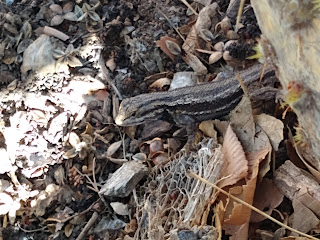The bosque is all about the water. It grows the trees and attracts the birds from all over the US and sometimes abroad.
Different genders of birds can act a lot like different species. This is a flock of female red wing blackbirds roosting. The males are solitary right now as they establish breeding territories.
While the male robins are brighter, both genders have similar colors (to me). This bird is found in mixed flocks, also usually in trees near to mud and shallow water. They are VERY big fans of worms found in this environment.
Many people don't notice the seabirds Albuquerque often hosts. They come in with the bigger storms, and usually stay for a while feeding on the river's wetlands, and the public landfill sites on the mesa. The flocks roost out in the open water for safety.
While temperatures have been mild this winters, a redular series of storms to the northern part of New Mexico has kept things unsettled and brought some very cold temperatures. Hopefully this will keep the insect population under control as invasive species continue to spread out across the US.
Cold temperatures are no issue for these Great Pyrenees loose in the ditch. This breed is popular as farm dogs for protection from native predation like coyotes and bobcats. The problem is they are excellent predators themselves. During nesting season dogs can cause a lot of problems for native animals.
Says phoebes are very active catching the first of the new crop of flying insects as the adults prepare for the spring hatchings.
Umbrella wasps are often seen during the summer, but I have one on my window now and it is pretty immobile. Hopefully it wakes up when temperatures rise. I do not have issues with the 2-3 nests on my house, and they are great insect predators. On high magnification, you can see the three "simple" eyes set in the middle of the head. We are not sure what those are for, but they probably help orient in a 3-D world while flying.
This flower weevil Trichobaris texana is evolved to feed on silverleaf nightshade, one of my favorite plants. When magnified, you can see the fuzzy exoskeleton which makes them tougher.
Insects and plants often form very intimate partnerships. This gall on a snakeweed plant is the result of a complex interaction between an egg laying wasp, a virus, and the host plant.
This plant juice sucking insect is a false chinch bug can become a garden pest, but usually is not found in huge numbers, especially where there are insectivorous insects and birds around to control numbers.
Eastern bluebirds often perch on pole where they can drop down quickly onto insects. While they do eat berries too, all birds seem focused on insects right now.
Of course, some are clearly interested in other birds. I still have never seen a red tailed hawk attack a duck, I do often see them watching the duck activity very closely.
This is the first southwestern fence lizard for the year. I have also seen turtles in the ditch but have not yet been fast enough to catch a picture. Lizards need heat to digest insects they catch, so are usually sunning themselves in the spring. When the night time temperatures rise above 60F they are going to be very abundant in the leaves.
I am quite surprised by the number of American Kestels that are around in the early mornings. I'm trying to notice what they eat because they have a very wide diet, everything from birds, to insects and small mammals.
Great blue herons are very easy to spot, but only when they want to be. While fishing they are quite cryptic and secretive.
They often perch high in trees during the breeding season and show off their fine feathers to each other during the day. Not very vocal, they often attract vocalizations from crow flocks, but not usually the aggressive mobbing behavior that crows reserve for raptors like coopers hawks.Most gardeners are busy planting the cool weather plants right now and many are noticing the "weeds" like this london rocket. These small yellow flowers are important food resources for many early pollinators like the cabbage white and morning cloak butterflies that are both present right now.
The Canada geese are not found in the huge meadow flocks iket hey have been, but they are still around and some are nesting. The males become very aggressive and "hissy" at this time of year as they protect the females.
There are a large number of wood ducks in Corrales as nesting season begins. This duck is not levitating, but is standing on a submerged log. Ducks do not actually like deep water and while they are found on land, water, and air, they never seem to be fully at home in any of those environments.This female wood duck is getting a lot of harassment from a loud whistling suitor. I would never have spotted her without the loud hooting of the nearby male. These small ducks have claws for gripping bark and nest in tree cavities. They can also raise two broods in a season, which is unusual for American ducks.
The male is loud, showy and fussy. They are usually found near a female at this time of year and are much more shy than the mallards. You can't deny that they are very beautiful, however. They are always found where shallow water and trees come together so the bosque is ideal for them.
























No comments:
Post a Comment